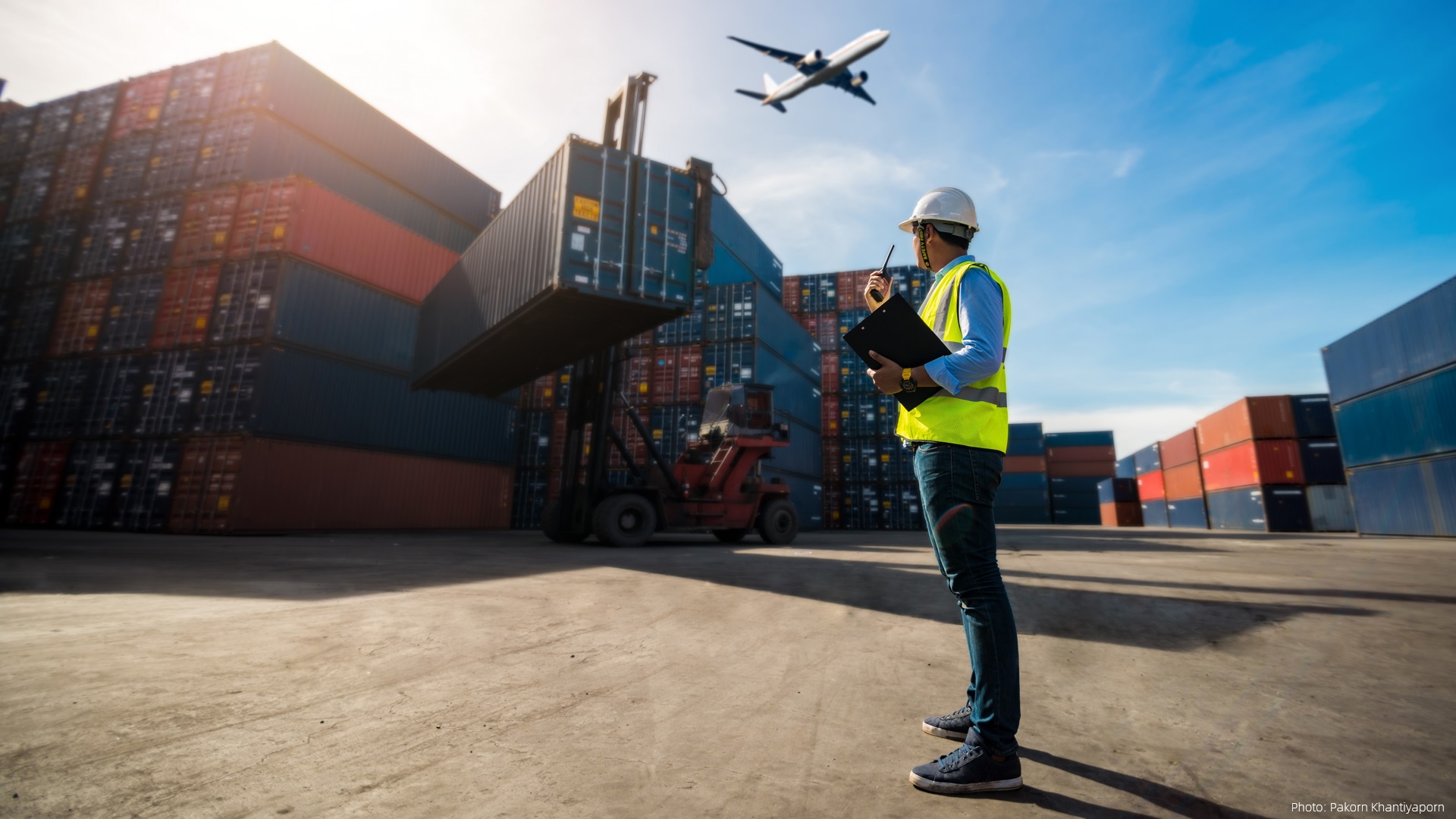Non-Tariff Barriers Stymie India’s Efforts to Boost Global Trade in 2023

Non-Tariff Barriers Stymie India’s Efforts to Boost Global Trade in 2023
The post-pandemic expansion of non-tariff barriers (NTBs) threatens to derail trade liberalization goals, even if the government is pursuing new free trade agreements that remove tariff walls.
Quotas, embargoes, technical rules, standards, and conformity assessment processes have all been employed as NTBs to guarantee product performance, quality, and safety.

Chillis, tea, basmati rice, milk, poultry, bovine meat, fish, chemicals goods, sesame seed, shrimp, medicines, and clothing to Japan are the principal Indian exports that frequently face significant NTBs. Food, meat, fish, dairy, and industrial items go to China.
Export restrictions apply to fruits, prawns and beef in the US and South Korea. Egypt imports ceramic tiles, Mexico imports chillies, Argentina imports pharmaceuticals, Saudi Arabia imports microbiological regulators, and Brazil imports electrical, medical, and home equipment.
According to one assessment, non-tariff barriers of one kind or another affect 80% of India’s commerce.
Tariffs are less effective than non-tariff trade obstacles for controlling trade. While taxes can control costs and help firms adapt, the lengthy list of criteria, intricate regulations, and time needed to achieve the technical and safety standards might deter many small and medium-sized enterprises.

Most Indian exporters struggled with lengthy, complicated licence, approval, and laboratory testing requirements. Furthermore, several nations established rules and regulations that did not conform to international norms. These put a heavy financial burden on exporters to comply with such strict restrictions. This affects their worldwide exports because they occasionally alter their manufacturing procedures and may need more production technology or infrastructure.
Most of these obstacles were implemented by industrialized nations and areas like the US and the EU.
According to Mithileshwar Thakur, secretary general of the Apparel Export Promotion Council, “the developed countries are using non-tariff barriers in greater numbers because they have agreed to very low bound tariffs at the World Trade Organisation, leaving little room for them to manoeuvre tariffs.”
The new FTAs being negotiated also address technical trade obstacles, but because different nations have developed fresh trade barriers, not all of them can be covered by the accords. The Carbon Border Adjustment Mechanism, sometimes known as the carbon tax, will be the greatest NTB shortly. Following the European Union’s first suggestion, industrialized nations, including the US and the UK, are now considering similar measures.
The developing nations have lodged their concerns against the carbon tax, and the World Trade Organisation may also be consulted.
In addition to the WTO and trade agreements, nations attempt to resolve the issue directly.
“Due to NTBs in the EU, USA, China, Japan, Korea, and many other nations, India’s exports are much below their potential. According to Global Trade Research Initiative founder Ajay Srivastava, for India to advance to the next stage, it is necessary to address the problem of non-tariff barriers, which has grown significantly since COVID.

The government keeps in contact with such nations even as strict criteria are placed on Indian exports to lessen their effects.
China has published over 2500 alerts on non-tariff obstacles in the last several years, compared to less than a hundred each from the US, UK, and UAE.
The nations impose many processes that need a lot of work and time to follow, in addition to highly rigorous standards that are occasionally not even supported by science. “The bigger exporters can deal with them, but small and medium enterprises are discouraged, and some of them give up their efforts,” Srivastava added.
According to Thakur of AEPC, the industry should take the initiative when technological trade obstacles occur.
He said nations must inform the World Trade Organisation before implementing TBT (Technical Barriers to Trade) measures. Most countries undertake a consultation procedure before a new TBT (Technical Barrier to Trade) is implemented, or an existing TBT is amended.
“Indian industry should proactively participate during the consultation process and register their apprehensions/concerns and raise objections, if any before the regulations notifying TBTs come into force,” he continued.
Raising domestic criteria for goods that experience export rejection is one strategy for overcoming non-tariff obstacles. “India should hold talks with its trading partners and be ready to retaliate if unfair standards or regulations continue to hamper imports from India,” Srivastava advised.
A significant obstacle is the impact NTBs have on India’s export performance. Important NTBs must be resolved within a set time range.
With its massive market and abundant resources, India has been striving to strengthen its position in global trade. Despite concerted efforts to liberalize its economy and create a business-friendly environment, non-tariff barriers have significantly hindered the country’s efforts to enhance its international business standing (NTBs). These barriers, often more insidious and more complex to quantify than tariffs, have limited India’s access to critical markets and reduced the competitiveness of its products and services abroad.
:max_bytes(150000):strip_icc()/GettyImages-968819844-f084399962054d939aff07fd3946132e.jpg)
NTBs refer to trade barriers not directly related to imposing a tariff or tax on imports or exports. They encompass various policies that countries employ to control the movement of goods, services, and investments. Examples of NTBs include import quotas, licensing, subsidies, technical standards, and regulations.
Many countries, especially those in the developed world, enforce stringent product quality and safety standards. While these standards protect consumers, they can serve as indirect barriers to trade. For Indian exporters, meeting these rigorous standards can be costly and time-consuming, particularly for small and medium enterprises.
Indian exporters often face logistical and administrative issues, including inefficient customs procedures and extensive documentation requirements. These obstacles delay shipments and increase transaction costs, making Indian products less competitive globally.
Some countries give preferential treatment to domestic suppliers in government procurement contracts. This puts foreign suppliers, including Indian companies, at a significant disadvantage, limiting their market access.
India’s IPR regime has been a longstanding point of contention with several trading partners, particularly the U.S. and the EU. They argue that India’s IPR laws do not adequately protect patents, trademarks, and copyrights.
The persistence of NTBs has cost India dearly in terms of potential export revenues. For instance, stringent EU and US agricultural standards have repeatedly limited Indian agrarian exports, such as mangoes and grapes. These barriers have confined Indian products to less lucrative markets with lower standards.
NTBs have also been a source of diplomatic strain between India and its major trading partners. They often lead to protracted trade disputes that must be resolved at forums like the World Trade Organization (WTO), which can harm diplomatic relations.
India has been engaging in extensive trade negotiations, both bilaterally and multilaterally, to address and remove these NTBs. For instance, India is negotiating free trade agreements (FTAs) with the EU and the US, which are expected to include clauses addressing NTBs.

India is undertaking significant domestic reforms to align its standards and regulations with international norms. For instance, the government has been updating its IPR regime and working to streamline and modernize customs procedures through digitization.
India has not shied away from taking its grievances regarding NTBs to international forums. It has filed several disputes at the WTO against countries it believes are maintaining unjust NTBs against Indian exports.

Non-tariff barriers have emerged as a significant challenge in India’s quest to boost its global trade profile in 2023. While these barriers are a common aspect of international trade, their scale and impact on India underline the urgency with which they need to be addressed. The Indian government actively engages in negotiations and domestic reforms to mitigate these barriers. However, a concerted and cooperative effort at the international level will be essential for substantial and lasting progress.



